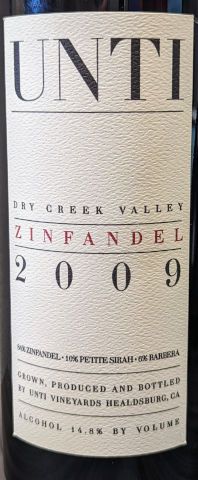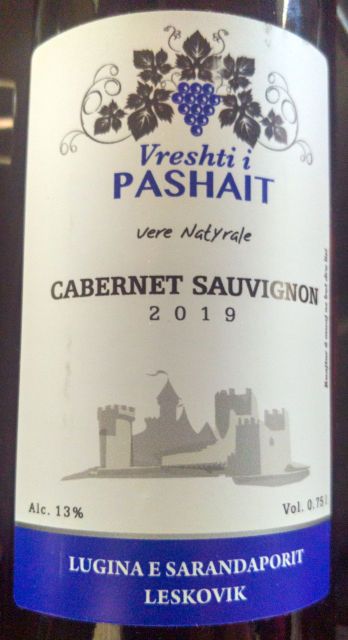-
2009 Unti Vineyards Zinfandel - USA, California, Sonoma County, Dry Creek Valley (3/26/2022)
Disappointing. I got some odd flavors I couldn’t pin down. Glenn wondered if it was oak. I wondered if maybe the fruit has faded and only the oak remained. I’m a fan of Unti wines. I recall tasting this at the winery and it seemed brambly like an Amador zin and not like a Sonoma County claret zin. It didn’t open up over the course of the dinner.

-
2019 Vreshti i Pashait Cabernet Sauvignon - Albania (3/26/2022)
This was given to me as a gift from a childhood friend who brought it back from Albania. He wanted an evaluation of it. I’m sensitive to pyrazines so I waited for a gathering of Bordeaux/cabernet sauvignon drinkers to evaluate it. Glenn pulled the cork and I gave it a taste. No pyrazines so no green peppers, no potato water, no wet newspaper. I was happy I could enjoy it. It was still cold but I got black fruit like cassis and maybe some mushroom. The finish wasn’t bitter but was more sour. That was the only flaw. Glenn, Zachary and Richard all thought it wasn’t varietally correct. It didn’t taste like cabernet sauvignon to them. Michelle thought it did since she also got black fruits and pencil shavings. Michelle said there was a notable lack of oak, which she thought maybe came from being made in a foudre made from Slovenian oak. Without the pyrazines, I lean towards it being maybe a hybrid of cabernet sauvignon and something else. The sour finish disappeared as it warmed out and got more air, but Michelle wondered if that was due to my food consumption changing how it tasted. It was a pleasant drink. It doesn’t seem to have the stuffing to age.

UPDATE:
The winemaker read this post and passed along these comments:
The variety is 100% cab sauvignon, but it has aged 7-8 months in wooden barrels from Kosovo, not Slovenia.
The sweetness at the end comes as it is from the late grape harvest and was more concentrated…